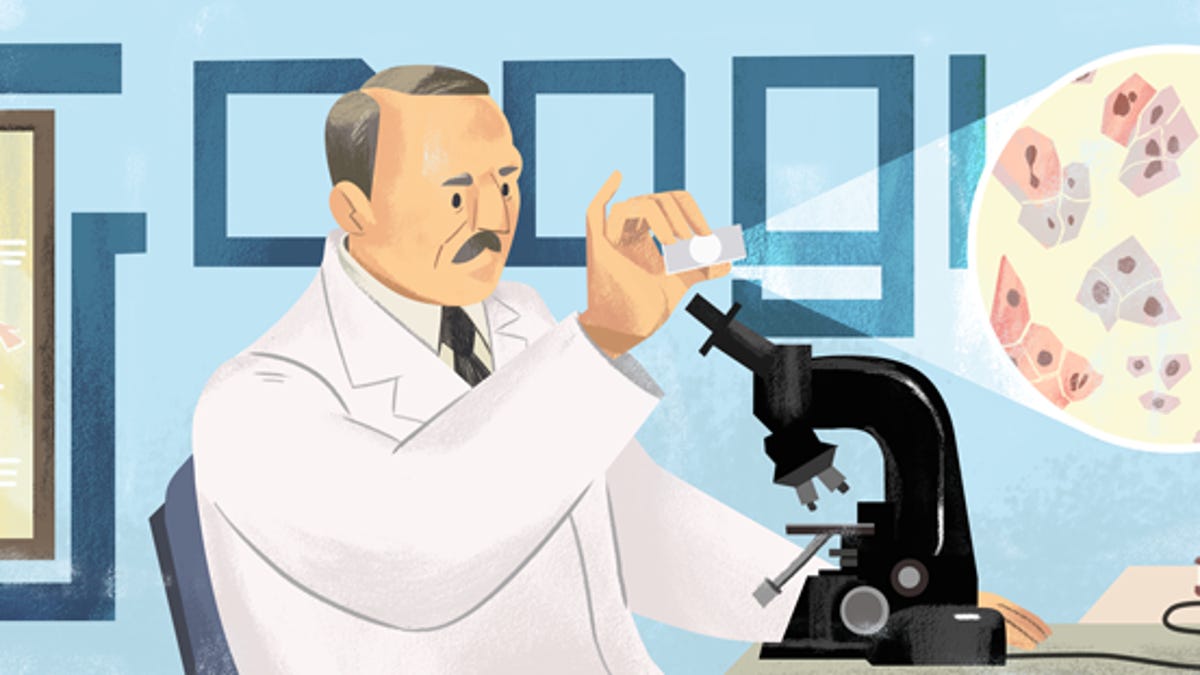Google Doodle honors Pap smear inventor Georgios Papanikolaou
The pathologist revolutionized early cancer detection and founded an entire scientific discipline.

Georgios Papanikolaou and his wife, Andromachi Mavroyenis, pioneered Pap smear testing.
Pioneering scientist, Georgios Papanikolaou would have been 136 years old Monday. The researcher is honored with the May 13 Google Doodle , which celebrates his birthday -- and his most important invention: the Pap smear.
His methodology opened up an entirely new field of medical study known as cytopathology, which examines cells of the body to look for disease.
Papanikolaou was only 15 when he started medical school. In 1910 he received his Ph.D. from the University of Munich, and three years he later immigrated to the US with his wife, Andromahi Mavrogeni. The duo found employment at Cornell University as researchers in the department of anatomy and began carrying out work studying cancers of the female reproductive system.
In 1928, he found that taking vaginal smears and examining them under the microscope enabled the detection of cancers. However, it took until 1943 for that work to be published.
With a special staining technique, Papanikolaou was able to study smears of vaginal cells under the microscope. The test is cheap and simple and has formed the basis of cervical cancer screening for decades. It can also be used to detect other diseases of the female reproductive system. The Pap smear is still used across the world for early detection of cancer, though in recent times some countries, such as Australia, use a method that no longer requires creation of a smear and instead looks at one of the root causes of cervical cancer: human papillomavirus.
Papanikolaou has previously been featured on stamps of the US Postal Service and was the face on the Greek 10,000 drachma banknote from 1995 to 2001. Monday's doodle features the researcher analyzing one of his famous smears.

